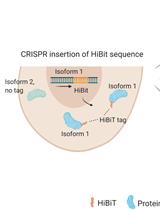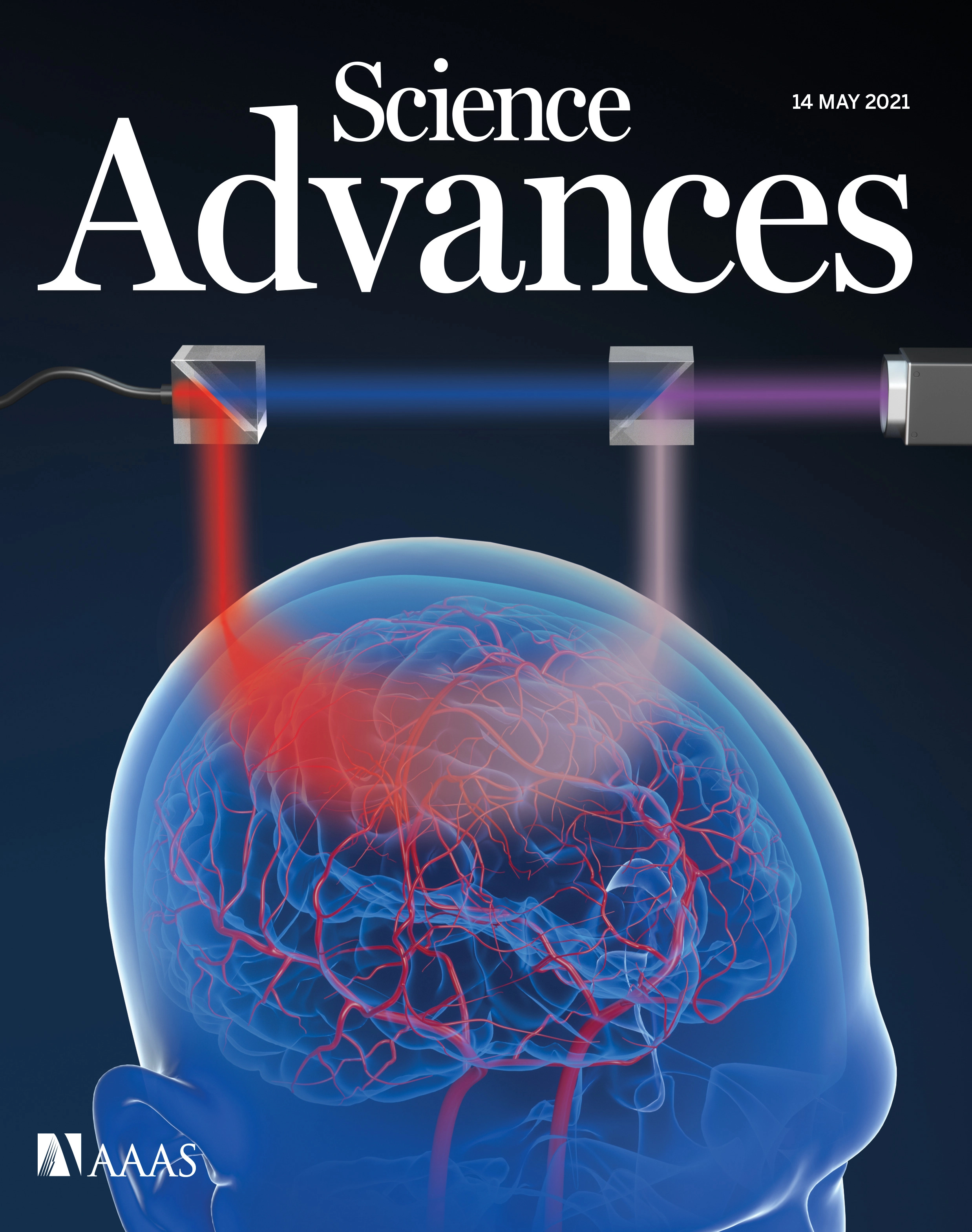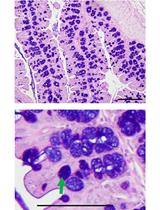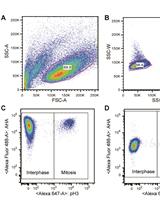- EN - English
- CN - 中文
Analysis of the Ubiquitination and Phosphorylation of Vangl Proteins
Vangl 蛋白的泛素化和磷酸化分析
(*contributed equally to this work) 发布: 2022年10月20日第12卷第20期 DOI: 10.21769/BioProtoc.4533 浏览次数: 3039
评审: Gal HaimovichAnonymous reviewer(s)

相关实验方案

通过CRISPR-Cas9介导的HiBiT标签对高度同源蛋白水平进行异构体特异性半定量测定
Kristina Seiler [...] Mario P. Tschan
2023年07月20日 2126 阅读
Abstract
The core planar cell polarity (PCP) protein Vang/Vangl, including Vangl1 and Vangl2 in vertebrates, is indispensable during development. Our previous studies showed that the activity of Vangl is tightly controlled by two important posttranslational modifications, ubiquitination and phosphorylation. Vangl is ubiquitinated through an endoplasmic reticulum-associated degradation (ERAD) pathway and is phosphorylated by casein kinase 1 (CK1) in response to Wnt. Here, we present step-by-step procedures to analyze Vangl ubiquitination and phosphorylation, including cell culture, transfection, sample preparation, and signal detection, as well as the use of newly available phospho-specific antibodies to detect Wnt-induced Vangl2 phosphorylation. The protocol described here can be applicable to the analysis of posttranslational modifications of other membrane proteins.
Keywords: Planar cell polarity (PCP) (平面细胞极化(PCP))Background
As a conserved cellular mechanism from invertebrates to vertebrates, planar cell polarity (PCP) refers to the asymmetric pattern of a group of cells within a tissue plane, and it controls the polarized cell behaviors and tissue morphogenesis during embryonic development (Yang and Mlodzik, 2015). PCP function is carried out by a set of core PCP proteins, including Fzd-Dvl/Dgo, Vangl-Pk, and Fmi complexes, which have mutually exclusive localizations within cells. Deletion or mutation of any of the core PCP proteins causes disintegration of the PCP asymmetry, and, thus, developmental defects, such as disorientation of bristles and hairs in Drosophila, convergent extension (CE) impairment in zebrafish, and neural tube defects in mammals (Butler and Wallingford, 2017). Of all the core PCP components, Vangl proteins are more dedicated to PCP signaling, with Vangl2 being developmentally more important than its homolog Vangl1. Disruption and aberrant activation of Vangl lead to a variety of developmental defects and cancer malignancy, respectively (Butler and Wallingford, 2017; Humphries and Mlodzik, 2018; Wang et al., 2021). Vangl is a four-pass transmembrane protein with both N-terminal and C-terminal in the cytosol. Our previous studies have shown that phosphorylation and ubiquitination, two posttranslational modifications, are interrelated in the regulation of Vangl protein homeostasis (Gao et al., 2011; Yang et al., 2017; Feng et al., 2021). Phosphorylation mainly occurs at two clusters in the N-terminus. Casein kinase 1 (CK1), particularly CK1δ and CK1ϵ, first induces basal phosphorylation of Vangl in the endoplasmic reticulum (ER), leading to its stabilization and trafficking to the plasma membrane, where Vangl is further phosphorylated by CK1 for its normal PCP function. Wnt5a can induce Vangl phosphorylation via its receptor Ror2. On the other hand, Vangl undergoes ubiquitination mainly at two lysine sites (K300/K306) in the C-terminus (Feng et al., 2021; Gao et al., 2011). The E3 ubiquitin ligase CUL3-KBTBD7 and the AAA+ ATPase p97/VCP mediate Vangl poly-ubiquitination and subsequent ER-associated degradation (ERAD), leading to its destruction in the proteasome (Feng et al., 2021). We also found that phosphorylation of Vangl prevents its ubiquitination and ERAD (Feng et al., 2021).
The functional significance of Vangl and Vangl phosphorylation in establishing PCP has been validated in various animal models, ranging from Drosophila, Xenopus, and zebrafish to mouse (Gao et al., 2011; Ossipova et al., 2015; Kelly et al., 2016; Yang et al., 2017; Strutt et al., 2019; Chuykin et al., 2021). However, the role of Vangl ubiquitination is only recently emerging (Feng et al., 2021; Radaszkiewicz et al., 2021). Unlike the canonical Wnt/ß-catenin signaling that can be measured by a number of biochemical assays, the noncanonical Wnt/PCP signaling lacks such tools. As Vangl phosphorylation is induced by Wnt5a, but ubiquitination is inhibited by Wnt5a (Feng et al., 2021), the analysis of Vangl ubiquitination and phosphorylation may provide a unique approach to analyzing Wnt/PCP signaling. Hence, here we describe the ubiquitination assay of Vangl proteins by providing two different methods with detailed information regarding reagents, procedure, and analysis. We also introduce the new method for Vangl phosphorylation assay by using the recently available site-specific phospho-Vangl2 monoclonal antibodies, which can sensitively detect the CK1-mediated Vangl2 phosphorylation induced by Wnt. The protocols described below for detection of the ubiquitination and phosphorylation of Vangl may facilitate the future studies of Wnt/PCP signaling.
Materials and Reagents
Materials
Cell culture dish, 100 mm diameter (Corning, catalog number: 9380H79)
Cell culture dish, 60 mm diameter (Corning, catalog number: 9380H77)
12-well plate (Fisher Scientific, catalog number: 08-100-241)
15 mL centrifuge tube (Sigma-Aldrich, catalog number: CLS430791)
10 mL pipet (Corning, catalog number: 4488)
1.5 mL Eppendorf tube (Axygen, catalog number: MCT-150-C)
1,000 µL blue tip (Axygen, catalog number: T-1000-B)
200 µL yellow tip (Axygen, catalog number: T-200-Y)
10 µL clear tip (Axygen, catalog number: T-300)
Eppendorf pipettes (Eppendorf, catalog number: 2231300002)
Electronic pipette (Thermo Scientific, catalog number: 9501)
0.22 µm filter (Fisher Scientific, catalog number: SLGP033RS)
Cell scraper (Fisher Scientific, catalog number: 08-100-241)
Cell lines and plasmids
HEK293T (Human Embryonic Kidney 293T) cells (ATCC, catalog number: CRL-3216)
CHO (Chinese Hamster Ovary) cells (ATCC, catalog number: CCL-61)
HA-Vangl2 plasmid (described previously in Gao et al., 2011)
His-Ubiquitin plasmid (described previously in Feng et al., 2021)
FLAG-Wnt5a plasmid (described previously in Gao et al., 2011)
FLAG-Ror2 plasmid (described previously in Gao et al., 2011)
Myc-CK1δ plasmid (described previously in Gao et al., 2011)
Antibodies
Anti-HA antibody (Roche, catalog number: 11867431001, 1:5,000 dilution)
Anti-His antibody (Abcam, catalog number: ab18184, 1:5,000 dilution)
Anti-FLAG antibody (Sigma-Aldrich, catalog number: F1804, 1:5,000 dilution)
Anti-Myc antibody (Santa Cruz Biotechnology, catalog number: sc-40, 1:2,000 dilution)
Anti-Ubiquitin antibody (FK2) (Enzo Life Sciences, catalog number: ENZ-ABS840-0100, 1:1,000 dilution)
Anti-Vangl2-Phospho-T78/S79/S82 antibody (ABclonal, catalog number: AP1206, 1:1,000 dilution)
Anti-Vangl2-Phospho-S79/S82/S84 antibody (ABclonal, catalog number: AP1207, 1:1,000 dilution)
Anti-Actin antibody (Sigma-Aldrich, catalog number: A2228, 1:5,000 dilution)
Anti-GAPDH antibody (Santa Cruz Biotechnology, catalog number: sc-47724, 1:5,000 dilution)
Goat anti-Mouse IgG (H+L) Secondary Antibody, HRP (Invitrogen, catalog number: 31430)
Goat anti-Rabbit IgG (H+L) Secondary Antibody, HRP (Invitrogen, catalog number: 31460)
Goat anti-Rat IgG (H+L) Secondary Antibody, HRP (Invitrogen, catalog number: 31470)
Reagents
Dulbecco’s Modified Eagle Medium (DMEM) (Gibco, catalog number: 12-800-017)
Fetal Bovine Serum (FBS) (Gibco, catalog number: 10-099-141)
Penicillin-Streptomycin (PS) (Gibco, catalog number: 15140122)
0.25% Trypsin-EDTA (Gibco, catalog number: 25-200-056)
Proteasome inhibitor MG132 (Abcam, catalog number: ab141003)
Lysosome inhibitor chloroquine (CQ) (Sigma-Aldrich, catalog number: C6628)
CK1 inhibitor D4476 (Abcam, catalog number: ab120220)
Deubiquitinase inhibitor N-Ethylmaleimide (NEM) (Thermo Fisher Scientific, catalog number: 23030)
cOmplete, EDTA-free Protease Inhibitor Cocktail (Roche, catalog number: 11836153001)
Phosphatase Inhibitor Cocktail (Thermo Fisher Scientific, catalog number: 78420)
Polyethylenimine (PEI) (Sigma-Aldrich, catalog number: 765090)
Opti-MEMTM I Reduced Serum Medium (Gibco, catalog number: 31985070)
Ni-NTA Agarose (Qiagen, catalog number: 30210)
Protein A/G Plus-agarose (Santa Cruz Biotechnology, catalog number: sc-2003)
Tris (Thermo Scientific, catalog number: J75825)
Sodium chloride (NaCl) (Sigma-Aldrich, catalog number: S9888)
Sodium phosphate dibasic (Na2HPO4) (Sigma-Aldrich, catalog number: S9763)
Sodium phosphate monobasic (NaH2PO4) (Sigma-Aldrich, catalog number: S0751)
Sodium bicarbonate (NaHCO3) (Sigma-Aldrich, catalog number: S6014)
Potassium chloride (KCl) (Sigma-Aldrich, catalog number: P3911)
Sodium phosphate monobasic (KH2PO4) (Sigma-Aldrich, catalog number: P5379)
Glycine (Affymetrix, catalog number: 16407)
Sodium dodecyl sulfate (SDS) (Sigma-Aldrich, catalog number: 436143)
Imidazole (Sigma-Aldrich, catalog number: 12399)
Guanidine hydrochloride (Sigma-Aldrich, catalog number: 50950)
4x Laemmli Sample Buffer (Bio-Rad, catalog number: 1610747)
β-Mercaptoethanol (Bio-Rad, catalog number: 1610710)
30% Acrylamide/Bis Solution, 29:1 (Bio-Rad, catalog number: 1610156)
Ammonium persulfate (APS) (Sigma-Aldrich, catalog number: A3678)
Tetramethylethylenediamine (TEMED) (Sigma-Aldrich, catalog number: T9281)
PageRuler Prestained Protein Ladder (Thermo Scientific, catalog number: 26616)
Immobilon-P membrane (PVDF) (Merck, catalog number: IPVH00010)
Methanol (VWR International, catalog number: BDH1135-1LP)
2-Propanol (VWR International, catalog number: BDH1131-1LP)
Bovine Serum Albumin (BSA) (Sigma-Aldrich, catalog number: A3912)
IGEPAL CA-630 (Sigma-Aldrich, catalog number: 18896)
Triton X-100 (Sigma-Aldrich, catalog number: 11332481001)
Tween-20 (Sigma-Aldrich, catalog number: P1379)
Deoxycholic acid (DCA) (Selleck Chemicals, catalog number: S4689)
SuperSignal West Femto Maximum Sensitivity Substrate (Thermo Scientific, catalog number: PI34096)
PBS (see Recipes)
RIPA lysis buffer (see Recipes)
Buffer A (see Recipes)
Buffer TI (see Recipes)
Buffer B (see Recipes)
8% Resolving Gel (see Recipes)
5% Stacking Gel (see Recipes)
WB Running Buffer (see Recipes)
WB Transfer Buffer (see Recipes)
WB Blocking Buffer (see Recipes)
WB Washing Buffer (see Recipes)
Equipment
37 °C, 5% CO2 forced-air incubator (Thermo Scientific, catalog number: 4110)
Warm water bath
Ultrasonic cell disruptor (Costar, catalog number: 3513)
Dry bath (Heater) (VWR International, catalog number: SH-1001)
Microcentrifuge (Hitachi, catalog number: CT15RE)
Shaker (VWR, catalog number: 97109-890)
Rotator (VWR, catalog number: 10136-084)
SDS-PAGE gel casting apparatus (Bio-Rad, catalog number: 1658008)
Protein electrophoresis and blotting instruments (Bio-Rad, catalog number: 1656019)
ChemiDoc MP imaging system (Bio-Rad, catalog number: 17001402)
Software
Image Lab 6.1 Software (Bio-Rad)
ImageJ (NIH)
Part I: For Vangl2 ubiquitination assay
Procedure
文章信息
版权信息
© 2022 The Authors; exclusive licensee Bio-protocol LLC.
如何引用
Readers should cite both the Bio-protocol article and the original research article where this protocol was used:
- Feng, D., He, Z. and Gao, B. (2022). Analysis of the Ubiquitination and Phosphorylation of Vangl Proteins. Bio-protocol 12(20): e4533. DOI: 10.21769/BioProtoc.4533.
- Feng, D., Wang, J., Yang, W., Li, J., Lin, X., Zha, F., Wang, X., Ma, L., Choi, N. T., Mii, Y., et al. (2021). Regulation of Wnt/PCP signaling through p97/VCP-KBTBD7-mediated Vangl ubiquitination and endoplasmic reticulum-associated degradation. Sci Adv 7(20): eabg2099.
分类
癌症生物学 > 通用技术 > 生物化学试验 > 蛋白质分析
生物化学 > 蛋白质 > 修饰
细胞生物学 > 细胞信号传导 > 磷酸化
您对这篇实验方法有问题吗?
在此处发布您的问题,我们将邀请本文作者来回答。同时,我们会将您的问题发布到Bio-protocol Exchange,以便寻求社区成员的帮助。
提问指南
+ 问题描述
写下详细的问题描述,包括所有有助于他人回答您问题的信息(例如实验过程、条件和相关图像等)。
Share
Bluesky
X
Copy link











